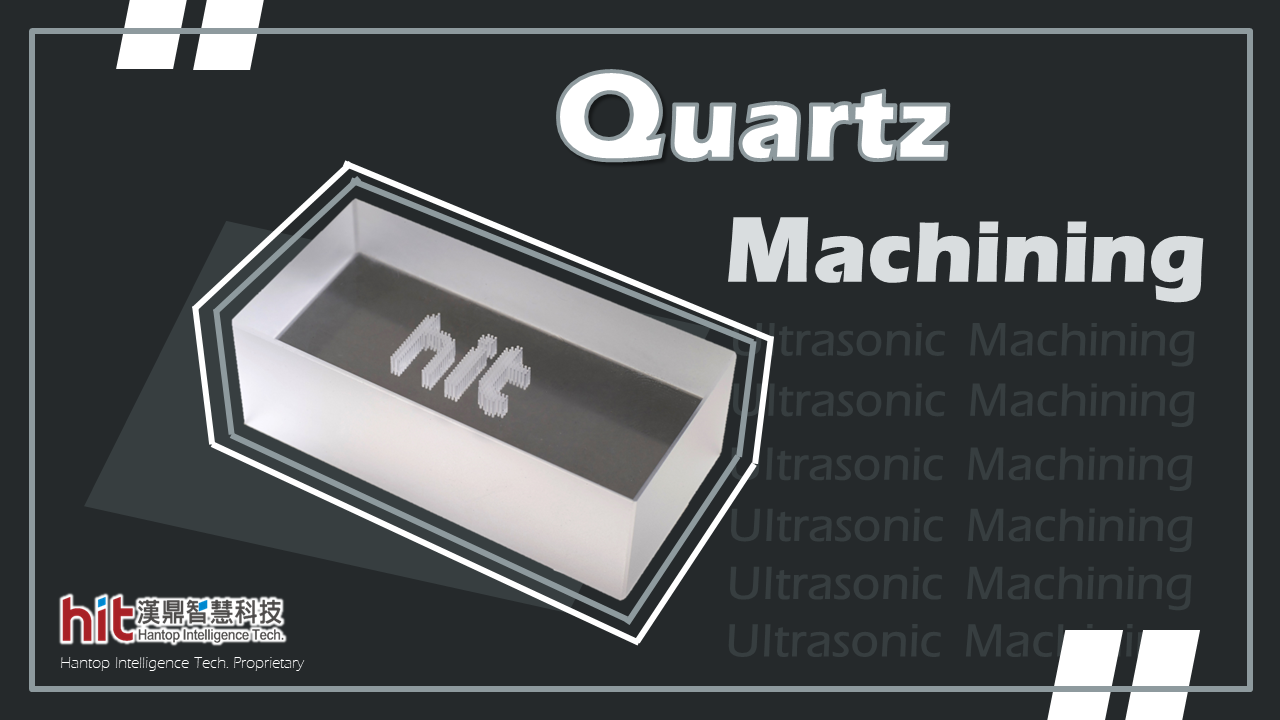Tag Result
quartz
What is Quartz and its Common Use? Quartz Material PropertiesQuartz can be manufactured into Quartz Glass, which is sometimes referred to as fused quartz or fused silica. The material is composed of silicon dioxide (SiO2), which has very low thermal expansion and can maintain its dimensional stability even at elevated temperatures. Quartz glass has excellent electrical insulation property and is inert to attacks from all kinds of acids, even in very high concentrations, except for hydrofluoric acid. The material has high compressive strength, but also displays high hardness and brittleness. Defects on the surface may have a serious impact on its overall material strength.References :Top-Seioko - Fused silica : Key properties & popular applicationsAZO Materials - Fused Silica/Quartz Glass - Properties and Applications of Fused Silica/Quartz Glass by Goodfellow Ceramic & Glass DivisionIQS Directory - Quartz glassHeraeus - Properties of fused silica Common Applications of QuartzSince quartz glass has a wide transparency range and superior light transmittance, this makes it an ideal material for multiple optical applications in optoelectronics industry, such as prisms, lenses, etc. Its material properties also gives it a wide range of applications in semiconductor industry, such as quartz ring, quartz crucible, quartz wafer boat, etc. F1. silicon wafers in plastic wafer boat (quartz wafer boat is also applicable) How Quartz Machining Works? Quartz Machining 1 : Milling F2. industrial material machining milling processMachining quartz glass can be done using high precision CNC milling machines that are designed to machine ceramics and materials similar to glasses in terms of brittleness. Though quartz glass is also a hard and brittle material, its machinability is relatively good. Quartz Machining 2 : Cutting F3. industrial material cutting with high pressure water jetDue to the hardness and brittleness of quartz glass, machining it may need diamond cutting tools and the machining parameters must be optimized. Band and wire saws, chop saws, CO2 lasers, and water jet cutters are common tools used to cut quartz glass. Quartz Machining 3 : Drilling F4. industrial material drilling on milling machineThe material can also be drilled by using a diamond drill. In order to prevent the tools from premature wear-out, it is important to make sure the proper cooling device is available. Difficulties in Quartz Machining Quartz Machining Challenges in QualityThough quartz glass possesses high compressive strength, it is still a very hard and brittle material. Even small defects on the surface may have serious impact on its overall material strength. Especially in quartz glass drilling, there will easily be serious subsurface damage with improper cutting force. Another downside of machining quartz glass is that machining it produces great deal of powder and clogs the diamond cutting tools. This not only affects the stability of tool life, but also severely damages the quality of the workpiece. Quartz Machining Challenges in EfficiencyThough quartz glass is considered to have relatively good machinability, it is a hard and brittle material. The control of cutting force is important when machining quartz glass, since it may be easily chipped or cracked under excessive cutting force. This usually results in a very time-consuming machining process, and leaves the processing manufacturers a huge headache when dealing with this material. F5. the challenge of enhancing machining efficiency while maintaining required quality What Does HIT Ultrasonic Machining Bring to Quartz Machining? HIT’s ultrasonic-assisted machining technology provides the superimposition of the tool rotation with a high-frequency oscillation in longitudinal direction, generating over 20,000 times of micro-vibration per second. The mechanism helps reduce cutting forces and facilitates chip removal process.F6. HIT's ultrasonic machining technology with high-frequency oscillation in longitudinal direction facilitates chip removal process The reduction in cutting forces not only decreases frictions between tools and workpieces, but also allows feed rates to be increased. This greatly improves the quality of workpieces and the stability of tool life, and saves quite an amount of processing time. F7. HIT's ultrasonic machining technology helps reduction in cutting force, bringing more stability in tool lifeFacilitating chip removal process diminishes frictions on both tools and workpieces caused by excessive amount of chips. HIT’s ultrasonic high-frequency micro-vibration allows chips to break easily and lessens the occurrences of entangled chips. This also displays a great benefit to both the quality of workpieces and the stability of tool life.The technology specializes in micro-drilling and deep hole drilling hard and brittle advanced materials, including technical ceramics, quartz glass, super alloys, etc. The high-frequency micro-vibration displays the ability to control the cutting force in stable manner, decreasing the possibilities of severe subsurface damage. Offering a better way to improve the machining process by effectively enhancing machining efficiency, stabilizing the tool life, and bettering the quality of workpieces. F8. HIT's ultrasonic machining technology displays outstanding results on quartz micro-drilling and deep hole drillingMore information on HIT Ultrasonic Machining Technology Two Successful HIT Cases of Quartz Machining Quartz Machining Case 1 : Micro-channel Trochoidal MachiningF9. Quartz glass ultrasonic-assisted micro-channel machining workpieceThe original process needed to go through by using #200, #400, and #800 grinding tools from roughing to finishing. With HIT ultrasonic, customer's requirement on workpiece quality can be achieved just by using #800 grinding tool.F10. HIT ultrasonic-assisted micro-channel trochoidal machining of quartz glass helped reduce the maximum size of edge-cracks (1x smaller and 2x smaller) by using #400 and #800 grinding tools respectivelyWith HIT ultrasonic, high frequency micro-vibration helped reduce grinding forces. (Under the same machining parameters) The maximum size of edge-cracks was 1x smaller (from 0.182mm to 0.094mm) than that without ultrasonic, by using #400 grinding tool. (Under the same machining parameters) The maximum size of edge-cracks can be even smaller (down to 0.059mm) by using #800 grinding tool with HIT ultrasonic, while it failed to complete the machining process without ultrasonic due to tool breakage at the first slot.F11. HIT ultrasonic-assisted micro-channel trochoidal machining of quartz glass brought better particle flushing, preventing the tool from particles accumulationWith HIT ultrasonic, the tool constantly lifted from workpiece, which allowed for easier inflow of cutting fluid. Better particle flushing prevented the tool from serious material backfill. This not only reduced tool wear but also friction between tool and workpiece, which helped control and reduce grinding forces.(Under the same machining parameters) Without ultrasonic, the tool was in constant contact with workpiece, which made it hard for particle flushing. There were massive particles accumulated on both side and bottom of the tool. This weakened the tool's grinding ability and led to an increase in grinding forces. It not only impacted workpiece quality, but also caused serious tool wear.Quartz Machining Case 2 : Micro-Drilling F12. Quartz glass micro-drilling workpieceHIT conducted a Φ0.3x5.4mm micro-drilling on a 60x30x20mm quartz glass workpiece. Using HIT’s ultrasonic tool holder HSKE40 with the integration of CTS, ATC, and CNC automation system, HIT managed to drill 300 micro-holes in total, with the processing time within 40 seconds/per hole. The outcome, in terms of machining efficiency, prevailed over the machining results provided by the tool suppliers and clients. The precision repeatability is well-maintained with no obvious edge-cracks on the hole wall.F13. Quartz glass micro-drilling processThis feature is widely applied in the Semiconductor industry, especially being used for quartz plates, quartz rings, quartz substrate lens board, etc.More information on Quartz : Micro-drilling Quartz Machining Case 3 : Deep Hole DrillingF14. Quartz glass deep hole drilling workpieceHIT carried out a Φ3x65mm deep hole drilling on a 100x100x30mm quartz glass workpiece. Using HIT’s ultrasonic tool holder HSKA63 with the integration of CTS, ATC, and CNC automation system, HIT completed the machining process by enhancing the material removal rate (MRR) from 65.54 mm3/min (non-ultrasonic) to 533.64 mm3/min (HIT ultrasonic). This helps reduce the overall processing time over 85%, from 26 minutes 44 seconds to 3 minutes 17 seconds. F15. Quartz drilling processThis feature is widely applied in the Optoelectronics industry and Defense and Aerospace industry, especially being used for quartz lens, quartz reflector lens, quartz lens for gyroscope etc.More information on Quartz : Deep hole drilling Quartz Machining FAQ Q1 When machining quartz glass, it often produces great deal of powder. The accumulated powder may severely clog the diamond cutting tool and have a serious impact on both the tool life and the quality of workpieces. How does HIT's ultrasonic technology deal with this situation?A1 HIT's ultrasonic-assisted machining technology provides the superimposition of the tool rotation with a high-frequency oscillation in longitudinal direction, generating over 20,000 times of micro-vibration per second. The mechanism helps reduce cutting forces and facilitates chip removal process. HIT’s ultrasonic high-frequency micro-vibration allows chips to break easily and lessens the occurrences of entangled chips. With the assistance of high pressure (70bar) coolant through spindle (CTS), it allows the chip removal process even smoother. F16. HIT ultrasonic machining driver moduleMore information on HIT Ultrasonic Machining Module Q2 How to adjust feed rates and amplitude when I start machining Quartz with HIT's ultrasonic machining module system?A2 HIT aims to help clients face the challenges in Quartz machining. This includes providing the optimum machining parameters and services to ensure clients having the best experiences in using HIT’s ultrasonic machining module system. It is not just buying a product from HIT, but obtaining the knowledge, services, and efforts from the most professional team.F17. HIT ultrasonic tool holders Quartz Machining? Choose HIT Contact us if you are looking for a better way to improve machining efficiency, quality, and tool life.
We use cookies to optimize and continuously update it according to your needs.The settings can be changed at any time under "Privacy"







